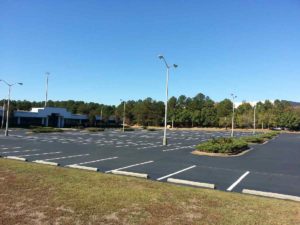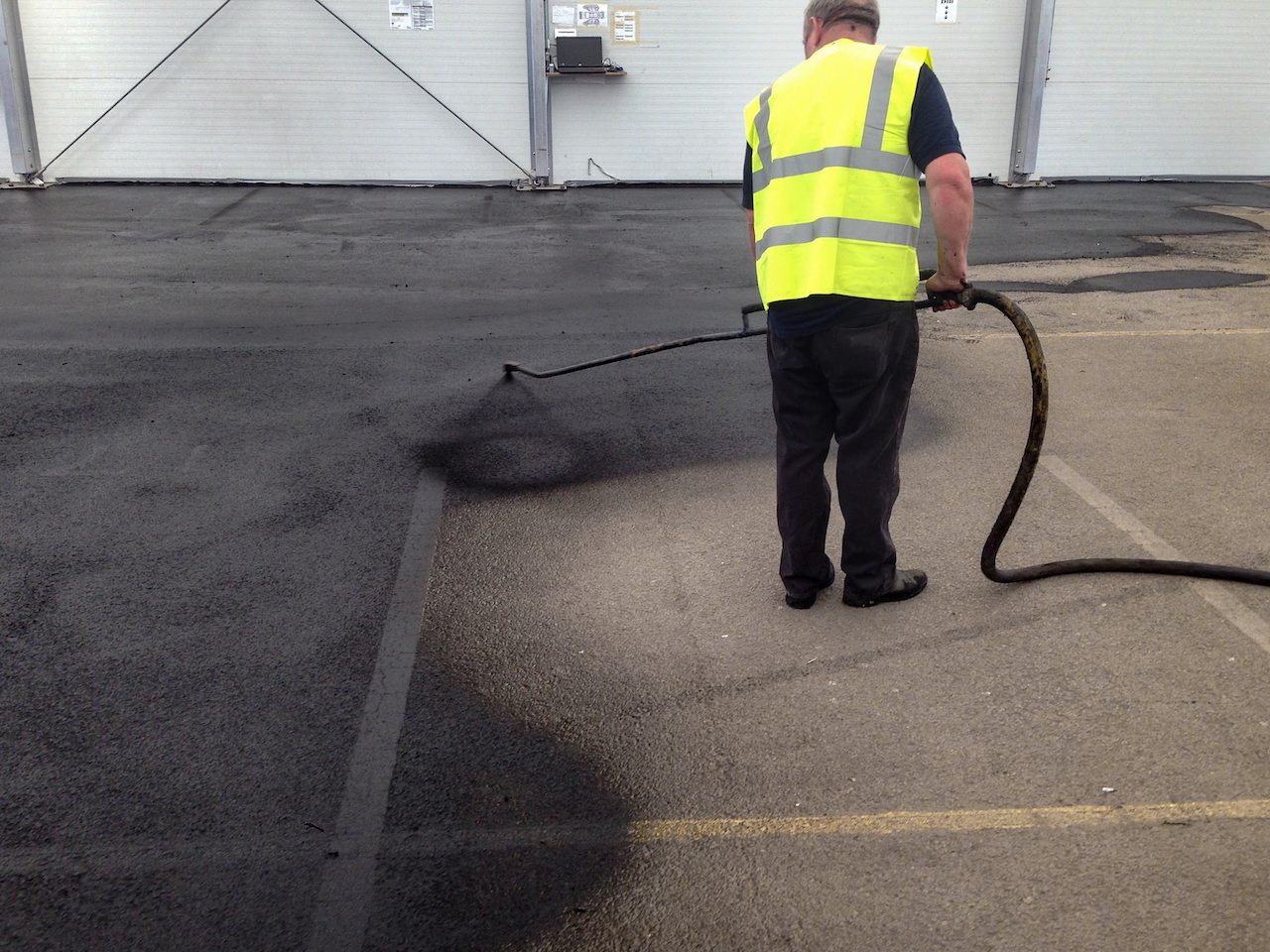
What Factors Influence the Schedule?
Sealcoating contractors consider several factors when determining the appropriate schedule for a specific parking lot. Most paving maintenance contractors will want to answer the following questions.
1. How old is the pavement, and what is its overall condition?
2. How much traffic does the parking lot receive during an average day?
3. What can be determined about the existing sealcoating?
How Does the Age and Condition of the Pavement Influence the Sealcoating Schedule?
New asphalt pavement must be allowed to cure before a sealant is applied. Depending on the time of year, the type of asphalt used, and the depth of the pavement, parking lot paving companies recommend waiting at least three to six months before applying a sealant; however, sealcoating should definitely be applied within 12 months. The average interval for sealcoating a relatively new asphalt pavement is about every two years. If the pavement is old, dry, brittle, and faded, however, the sealcoating interval may need to be reduced to every 12 to 18 months.
How Does Traffic Volume Influence the Interval Between Sealcoating Applications?
Sealcoating creates a hard shell over the pavement, but this shell can be worn away by traffic. If there are only a few dozen cars driving through the parking lot daily, the sealcoating will last much longer than if hundreds of cars are driving through the same parking lot. A parking lot that sees only light traffic may not need fresh sealcoating for three or four years, but one receiving heavy traffic may need a new application every 18 to 24 months. It may also be necessary to touch up areas where cars are frequently braking and accelerating, including exit drives and drop-off lanes. If you have your contractor perform parking lot patching procedures, you might want to ask him about touching up the sealcoating in those areas.
How Does the Existing Sealcoating Affect Scheduling?
It is impossible to rely on the calendar alone to determine whether it is time to sealcoat. If there were problems with your previous sealcoating application, you might need to have the operation repeated sooner than you expected. Sealcoating that is flaking off, cracking, or exhibiting unusual wear patterns can indicate that your pavement is not being properly protected. Perhaps the contractor failed to make paving repairs before applying the sealant, the coats of sealcoating were too thick or too thin, the contractor used an inferior product, the weather conditions were unsuitable, or the contractor prepared the sealant mix incorrectly. Although no one wants to have a maintenance procedure repeated prematurely, doing so can help ensure that you are giving your pavement every opportunity to reach its full life without unexpected and costly repairs.
Contact the Parking Lot Experts at MH Greeson
We are a highly respected Marietta paving company that specializes in parking lot maintenance and repairs for clients throughout North Georgia. Our services include asphalt sealcoating, parking lot striping, asphalt parking lot patching and crack repair, bollard installation, traffic signs, parking lot design, and car stops. We are known for our integrity, reasonable rates, craftsmanship, and customer service. We offer free quotes, so fill out the online form to get started. If you prefer calling, you can reach us at 770-335-2983.




